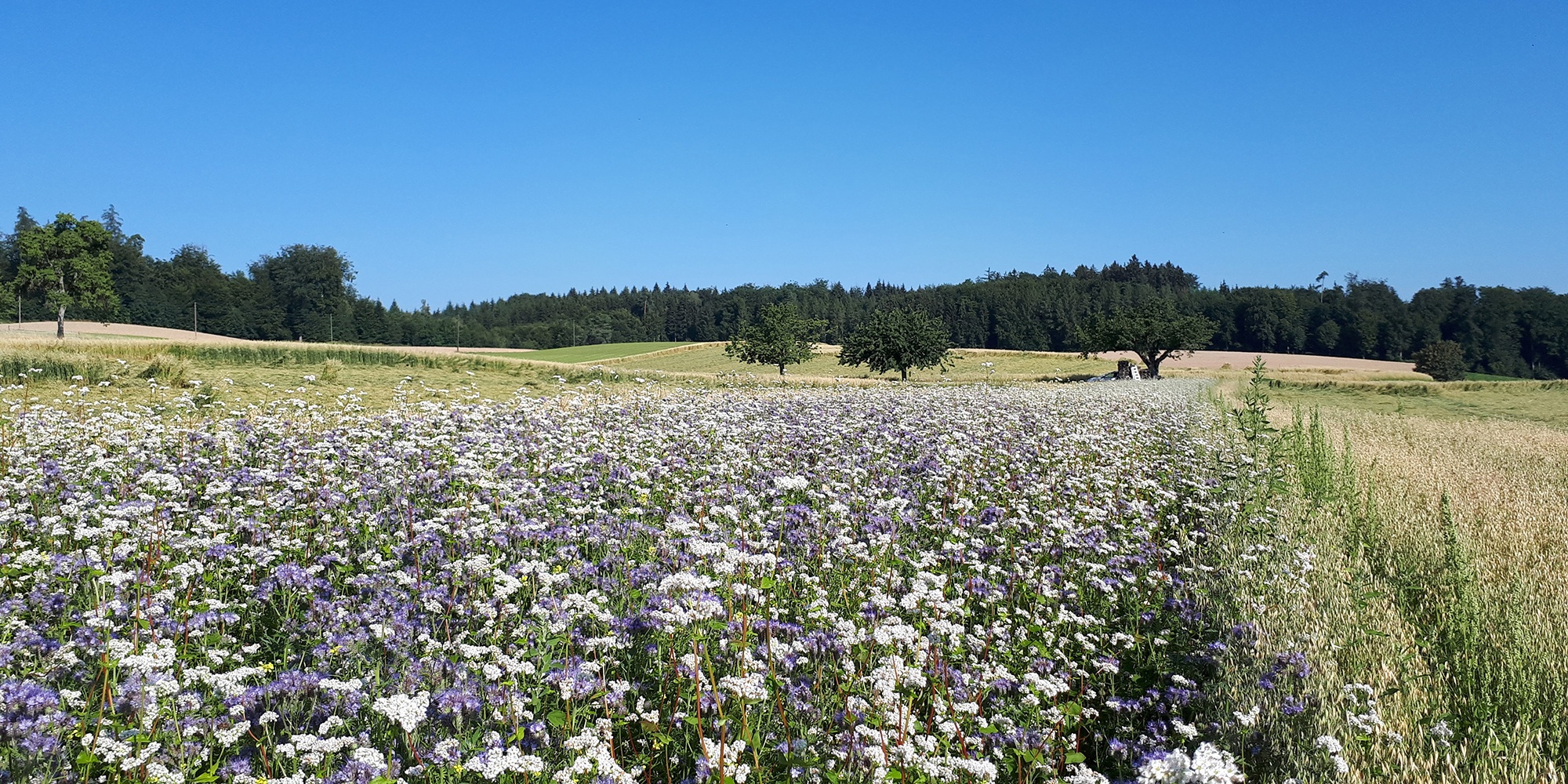Pollinator Flower Strips: Survey Shows Broad Satisfaction in Practice
Photo: Katja Jacot,
Agroscope
Farmer acceptance plays a crucial role in establishing optimal flower strips. A survey conducted by Agroscope, FiBL and HAFL shows that pollinator flower strips work in practice, and lead to high satisfaction.
The productivity and yield of many arable, vegetable and fruit crops depend significantly on adequate pollination by insects. Pollinators, however, are reliant on a varied, ideally continuous supply of floral resources. Annual flower strips are intended to reduce the nectar shortage for bees and other pollinators between the end of May and the end of July, and to attract natural antagonists of agricultural pests to crops with the promise of food. Besides mixture composition and location factors, farmers’ experiences also play an important role in establishing an optimal floral strip. For this reason, and since 2015, Agroscope, FiBL and HAFL have conducted a survey in the form of a questionnaire asking participants about their motivations in terms of floral strips and their practical experience of the latter.
Low extension service consultation rate accords with suboptimal choice of mixtures
Most of the respondents set up a pollinator flower strip (PFS) with the aim of encouraging pollinators and other beneficial insects, reducing pests, and enhancing attractiveness for walkers. Financial contributions were a motivating factor for just under half of the farmers. PFSs were often created alongside crops such as wheat, potatoes or vegetables, but a beneficial-insect flower strip would be better suited for pest reduction in these crops. Although extension service advice could optimise the choice of flower strip and better adapt it to the neighbouring crops and the motivations of the farmers, only 19% of respondents made use of extension services.
Pollinator flower strips work in practice
A positive picture was painted by the personal observations of the farmers: The majority of the PFSs emerged well, caused acceptable weed pressure, required moderate effort, and had a high abundance of flowers and insects. Most of the participants were satisfied with their PFS, and would create one up again. Such feedback from practice is important to allay any worries on the part of the farmers regarding weed pressure and effort, and to increase the acceptance of flower strips in the future.
Conclusions
- Pollinator flower strips work in practice. Most of the survey respondents were satisfied with their flower strips, and would create one again.
- The majority of the flower strips emerged well, caused acceptable weed pressure and required moderate effort.
- Farmers observed a high abundance of flowers, bees and other insects in their flower strips.
- The low rate of consultation with extension services goes hand in hand with an often- suboptimal choice between pollinator- and beneficial-insect flower strips.
- Improved advice should lead to a targeted selection of seed mixtures that are better able to achieve the desired effect.
- The results of these and future surveys as well as the additional scientific support will continue to shape the optimisation of mixture composition as well as the creation and upkeep of the flower strips.
Scientific article
Pollinator Flower Strips: Survey Shows Broad Satisfaction in Practice



